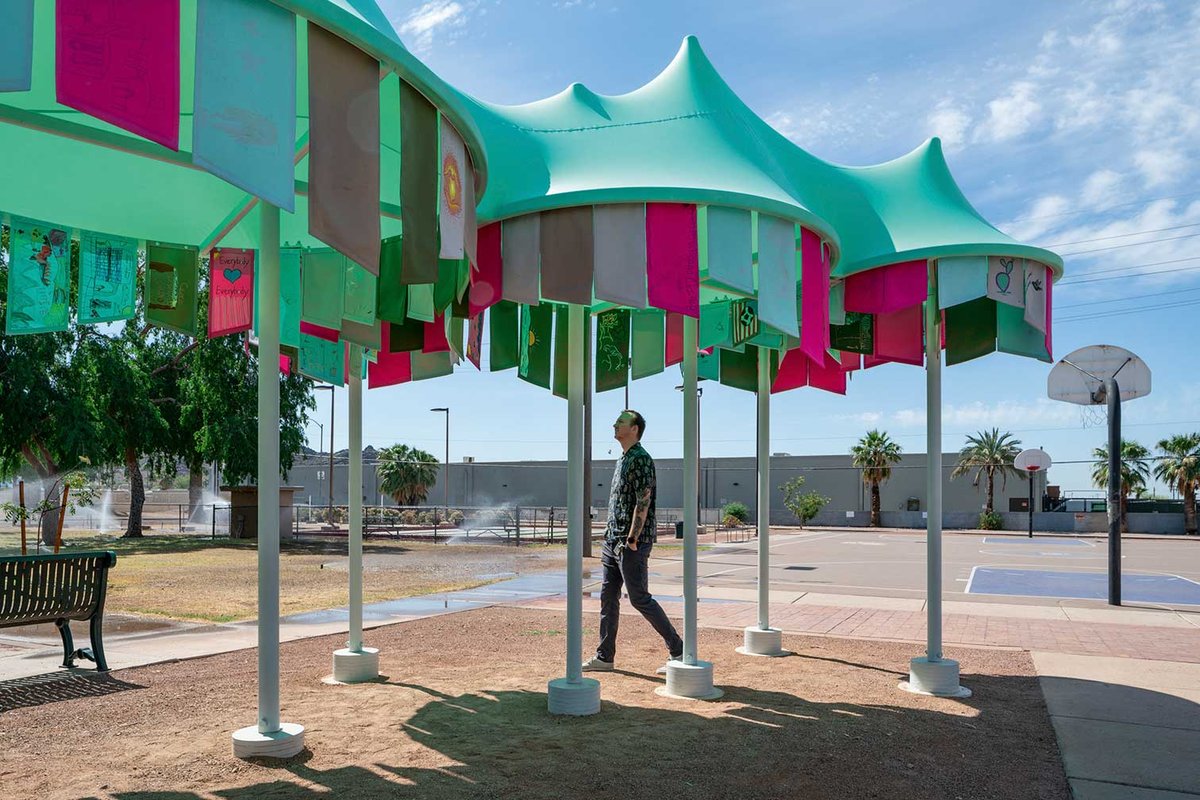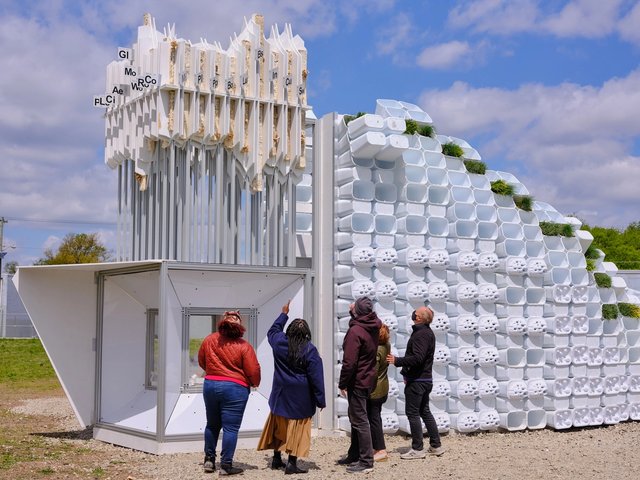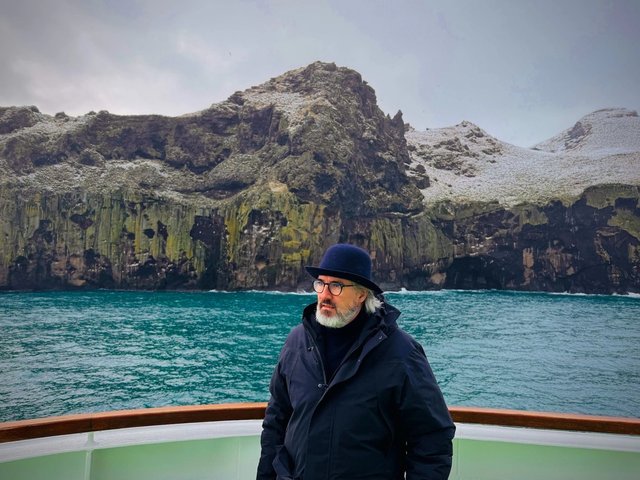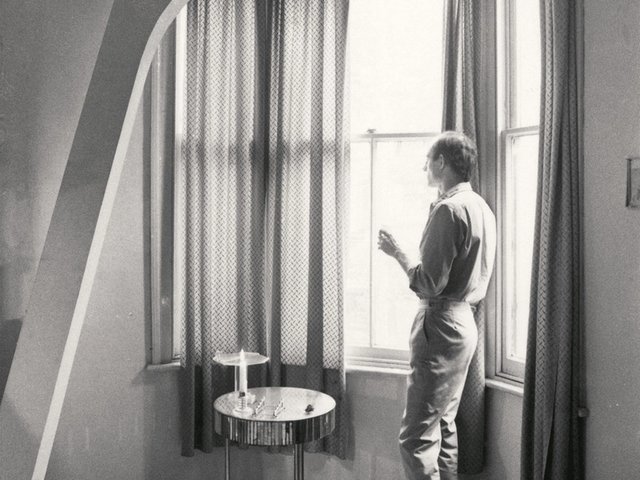As global temperatures increase annually, communities across the world are facing the troubling fact that their infrastructure was built for a climate that no longer exists. Offering a glimpse of the potential issues to comae, residents of Phoenix, Arizona—the hottest city in the US, and fifth-largest—are grappling with life-threatening conditions, including recent reports of heatstroke and burns affecting its community of unhoused individuals. To offer respite from the heat, the city launched ¡Sombra! Experiments in Shade, a temporary installation of nine artist-designed shades in public spaces across Phoenix (until 31 October).
“Each project brings something new and exciting to the table,” Carrie Brown, the deputy director of the Phoenix Office of Arts and Culture, tells The Art Newspaper. “The artists experimented with a variety of materials, from heat-mitigating paint to corn husks and adobe bricks. They also experimented with fabrication methods and temporary anchoring systems.”
Among the projects using heat-mitigating materials is an installation by the New York-based artist and landscape architect Jessica Arias called Reflections on Sunnyslope. The raised, tent-like shades were made with UV-resistant canvas and heat-reducing paints, their shapes mirroring the peaks of the Sunnyslope Mountain in the distance. Hanging from the shade are drawings made by local residents.
Shady business
The Arizona-based artists Jose Benavides and Joe Ray experimented with solar-powered misting systems in their pavilion, Rincón de Color. Taking the form of a gathering place in Cielito Park, the installation includes motion-detecting sensors that activate mist during the hottest parts of the day. The design of the shade includes four large Oaxacan mythological creatures known as alebrije, which were painted on the structure’s supporting columns with the help of local high school students.
¡Sombra! was funded in part by a $1m grant from the Bloomberg Philanthropies Public Art Challenge, an initiative that encourages mayors to find creative solutions for urban issues through partnerships with artists. “The premise of Bloomberg Philanthropies’ Public Art Challenge is to showcase the extraordinary solutions that arise when artists partner with local leaders to tackle an urgent civic issue, in our case extreme heat,” Brown says. “Our public art programme has a history of creating artist-designed shade structures that add colour, uniqueness and function to our communities, and this grant opportunity allowed us to experiment with new methods and materials and learn from the artists’ creative approach.”
Tackling the issue of heat is increasingly urgent in Phoenix. In recent years, the number of days when the temperature has hit 110°F or higher has risen dramatically, to 70 days in 2024 compared with the annual average between 1991 and 2020 of just 21 days. Temperatures in the city are often remaining high even through the night, threatening in particular the reported population of approximately 9,700 people experiencing homelessness in Maricopa County, where Phoenix is located (an increase of around 2,300 people since 2020).
The locations chosen for ¡Sombra! were determined by Phoenix’s Office of Heat Response and Mitigation—the first such municipal heat office in the US, founded in 2021—which maintains heat maps of the city. Additional considerations were given based on the location’s suitability for a temporary structure and whether it already has public art and shade on site.
To test how successful the projects were in reducing heat, the city took temperature measurements inside and outside the installations. Some shades have proven to work remarkably well. Based on the temperatures taken, Reflections on Sunnyslope, with its UV-resistant canvas and heat-reducing paints, has had the biggest impact. The measurements showed at one point a 48°F difference from the temperature outside the shade—a remarkable 150°F in the sun versus 102°F in the shade.
Turning down the heat
Though the installations are temporary, some artists might be invited to re-create their installations based on their ability to provide shade and reduce temperatures. If any structure were to become permanent, the artist would need to find suitable durable materials and the project would have to undergo a different permitting process.
In addition to the shades in ¡Sombra!, Phoenix has worked with artists to design bus stops, street canopies and other heat mitigation initiatives for the past few years. These are part of a broader programme the city is undertaking to address the heat.
“The city recently adopted the Shade Phoenix Plan, which outlines specific actions and strategies to improve the access and quality of shade in the city,” says Mary Wright, the built environment specialist at the Phoenix Office of Heat Response and Mitigation. “This includes some artistic projects, but spans across infrastructure, policy and education.” Among the other initiatives, Phoenix has planted additional trees, implemented cool pavements to mitigate the urban heat island effect and developed a heat response programme for locals who are in need of assistance.
The city plans to take lessons from the artists’ experiments with materials and technologies in ¡Sombra! and apply them more broadly to its heat mitigation efforts. “The knowledge gained from these projects will be invaluable to the growth of our programme, which is what I am most excited about,” Brown says. As temperatures continue to climb globally, these lessons and civic initiatives may offer blueprints for other communities soon to face similar conditions.
- ¡Sombra! Experiments in Shade is a temporary installation of nine artist-designed shades in public spaces across Phoenix, until 31 October






